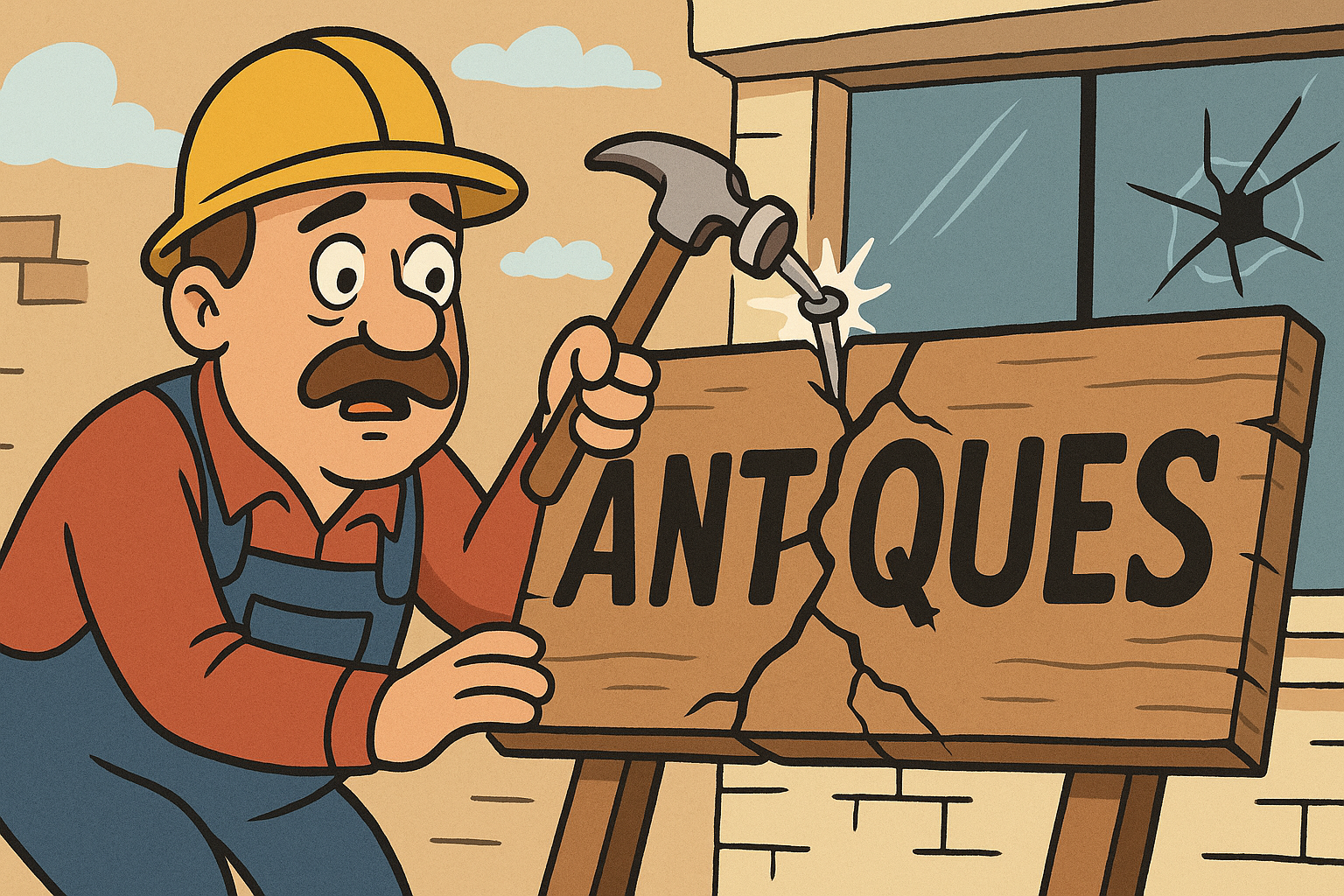**"The Last Nail: Chesterburgh’s Struggle to Save the Antique Emporium"**

The scaffolding has been up for three weeks now outside what used to be the Chesterburgh Antique Emporium. At first glance, it looks routine—fresh paint, some replaced windows, a tightening of an old façade. But the whispers in the shadow of the scaffolding tell a different story. A story Chesterburgh’s town hall isn’t rushing to confirm.
The Emporium has been a quiet constant on Maple Street since 1924. It’s one of those landmarks you don’t notice until it’s gone—weathered bricks, stained glass panes, creaky floorboards that echo decades of footsteps. Its owners, the Parsons family, have always kept a low profile. Last week, however, a permit application slipped through Chesterburgh’s Building Department— “permit #5249: demolition and rebuild.” A bulldozer ready to bite where there once were antiques.
The town’s zoning board insists the demolition is “completely above board” and assures residents the new structure will “maintain the historic look.” But that phrase, “maintain the historic look,” is vague enough to mean anything from a tasteful renovation to a glossy mimic that wipes away the grit and soul of what was. One local, Earl Grimes, who has lived across the street for 30 years, muttered, “They’re dressed up for the ball but the skeleton’s gone.”
Here’s where Chesterburgh’s invisible line between progress and erasure begins to blur. The town council’s minutes from last month barely mention the Emporium’s future. No public hearing was announced. Just a brief nod from the zoning board tucked between agenda items about speeding fines and park benches. This is not how you handle a building with the kind of history that smells like mothballs and jazz nights long past.
More troubling are the voices you won’t find on the record. Behind the municipal windows, some officials admit they’re under pressure—“from investors who prefer shiny new constructions over peeling paint and old dust.” An anonymous insider confided, “The permit pushed through faster than usual. There’s money behind this. Not from Chesterburgh’s pockets.”
“The town’s losing its soul little by little,” says Laura Jenkins, who runs the local bookstore across the street. “If the Emporium goes, what’s next? The old post office? The diner where Frank used to sit every morning?” Her eyes didn’t just plead; they warned. “We lose these places, we lose pieces of ourselves.”
The Emporium isn’t just bricks and antiques—it’s a container of countless untold stories. Stories about the Great Depression’s slow drag across Chesterburgh, about immigrant families who arrived with empty pockets but bright hope. About the jazz musicians who found refuge in smoky corners, spinning melodies while the world outside snapped its fingers to a different beat. The present hand that moves against this fabric of memory is slippery and deliberate.
Attempts to reach the Parsons family for their take hit walls of silence. A neighbor suggests they’re uneasy—“Keep your head down,” was the advice passed along. A message, maybe, from the heavy weight of change pressing on small-town shoulders.
Meanwhile, the Chesterburgh Historical Society claims to be “monitoring the situation closely.” Yet, the group’s last public statement was a vague promise to “engage with stakeholders” and “explore preservation options.” Exploration, in bureaucrat-speak, is often a polite way of saying the clock is running out.
There’s a fissure widening here—between what is documented and what is whispered. Between the paperwork on file and the memories fading in a dim shop window. Between progress dressed up as preservation and preservation that refuses to stand still.
Chesterburgh stands at its own crossroads. The Emporium’s derelict charm is a casualty to efficiency and modernity, or a beacon for rallying voices who refuse to let their town be smoothed into forgettable uniformity. Everyone who walks past that scaffolded wall sees the same thing: a building stuck between two futures.
“Every quiet street has at least one liar and one saint.” Maple Street is no exception. Which side will Chesterburgh choose when the last nail is hammered and the dust settles? Will the Emporium be remembered as a lost chapter, or a call to arms?
